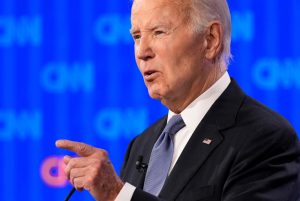By PAUL WISEMAN | Associated Press
WASHINGTON — A measure of prices that is closely tracked by the Federal Reserve suggests that inflation pressures in the U.S. economy are continuing to ease.
Friday’s Commerce Department report showed that consumer prices were flat from April to May, the mildest such performance in more than four years. Measured from a year earlier, prices rose 2.6% last month, slightly less than in April.
Excluding volatile food and energy prices, so-called core inflation rose 0.1% from April to May and 2.6% from 12 months earlier. Both figures were slight improvements on the previous month’s data.
The latest figures will likely be welcomed by the Fed’s policymakers, who have said they need to feel confident that inflation is slowing sustainably toward their 2% target before they’d start cutting interest rates. Rate cuts by the Fed, which most economists think could start in September, would lead eventually to lower borrowing rates for consumers and businesses.
Related Articles
Santa Cruz area named most expensive rental market in nation. Again.
Taco Bell has a new $7 Luxe Cravings Box
Walgreens will close a ‘significant’ number of its 8,600 US locations
PG&E monthly utility bills will drop – temporarily – starting July 1
Here’s how much the middle class has shrunk since the 1970s
The Fed raised its benchmark rate 11 times in 2022 and 2023 in its drive to curb the worst streak of inflation in four decades. Inflation did cool substantially from its peak in 2022. Still, average prices remain far above where they were before the pandemic, a source of frustration for many Americans and a potential threat to President Joe Biden’s re-election bid. Friday’s data adds to signs, though, that inflation pressures are continuing to ease, though more slowly than they did last year.
The Fed tends to favor the inflation gauge that the government issued Friday — the personal consumption expenditures price index — over the better-known consumer price index. The PCE index tries to account for changes in how people shop when inflation jumps. It can capture, for example, when consumers switch from pricey national brands to cheaper store brands.
Like the PCE index, the latest consumer price index showed that inflation eased in May for a second straight month. It reinforced hopes that the acceleration of prices that occurred early this year has passed.
The much higher borrowing costs that followed the Fed’s rate hikes, which sent its key rate to a 23-year high, were widely expected to tip the nation into recession. Instead, the economy has kept growing, and employers have kept hiring.
Lately, though, the economy’s momentum has appeared to flag, with higher rates seeming to weaken the ability of some consumers to keep spending freely. On Thursday, the government reported that the economy expanded at a 1.4% annual pace from January through March, the slowest quarterly growth since 2022. Consumer spending, the main engine of the economy, grew at a tepid 1.5% annual rate.












